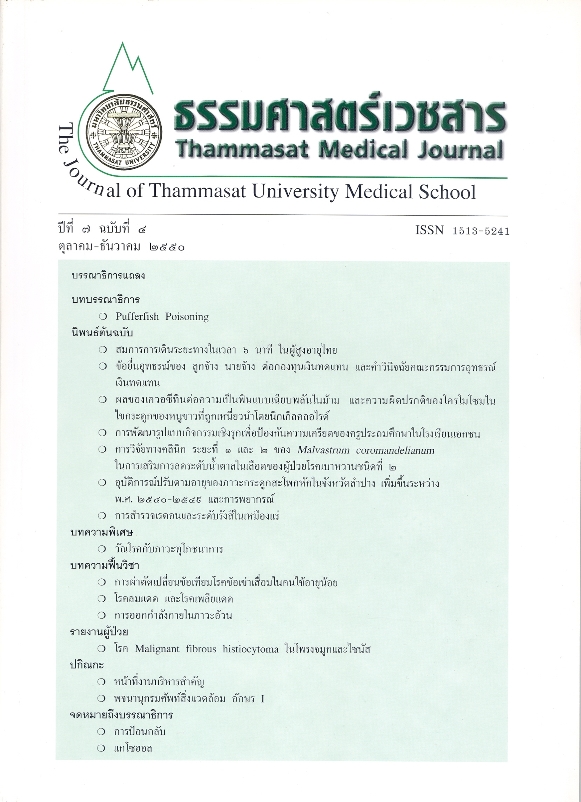Increasing Age-adjusted Incidence of Hip Fractures during 1997-2006 and its Prediction, in Lampang
Keywords:
Hip fracture, Incidence, Lampang, Prediction, กระดูกสะโพกหัก, อุบัติการณ์, ลำปาง, การพยากรณ์Abstract
Background : Hip fracture is an important public health problem, affecting a large number of the osteoporosis elderly causing morbidity, mortality and high cost of care. This is a descriptive study to estimate the incidence of hip fracture in the elderly aged 50 years and older in Lampang during 1997 to 2006 and to forecast the numbers of hip fracture until the next 20 years.
Methods : All patients who were discharged during the fiscal year of 1997 to 2006, for treatment of first hip fractures in Lampang Hospital, were selected. Hip fractures were classified using ICD-10 for fractures of the neck of femur, pertrochanter and subtrochanter. The pathologic fractures were excluded. The annual midyear population figures for each 5-year age group were taken from the census registration service of the Lampang public health office. The forecasted numbers of hip fractures were calculated on the basis of two assumptions; namely, the models of unchanged age-adjusted incidence rate and changing age-adjusted incidence rate.
Results : The total numbers of hip fractures indicated an increase 12.7% per year from 198 in 1997 to 424 in 2006 (13.5% for women and 11.1% for men). The numbers of population at risk increased 2.6% per year. The ratio of female to male in the elderly was higher than the young age groups, with the highest ratio of 3.8 times in the 75-79 years old group. There was a steady increase in the mean age of all hip fracture patients with significantly higher age in women than in men (75.5 ± 9.0 and 74.2 ± 10.6, p < 0.001, 95% CI = 0.50-2.23, respectively). The age- and sex-specific incidences in women and men increased exponentially during this period (R2 = 0.986 and 0.996, SEE = 0.191 and 0.080, and p < 0.001, respectively). The age-adjusted incidence increased 9.2% per 100,000 women per year (from 152 to 280) and was 6.6% in men (from 83 to 133 ). The trochanteric fracture was the most frequent type of hip fractures in both sexes, with a total of 59% in 1997 and 65% in 2006. If the trends of age-adjusted incidence continue to change, the forecasted numbers of hip fracture will continue to increase 733 by 2016 and 1,390 by 2026. The increase in the numbers of patients is estimated to be approximately double and treble of the present numbers through 2018 and 2023 respectively.
Conclusion : The absolute numbers and age-adjusted incidence of hip fractures are increasing in both sexes. The projected numbers of hip fractures will increase although the age-adjusted incidence rates do not change. The proportion of trochanteric fractures will increase in future. Thus, the preventive strategies are needed to develop.
Key words : Hip fracture, Incidence, Lampang, Prediction



